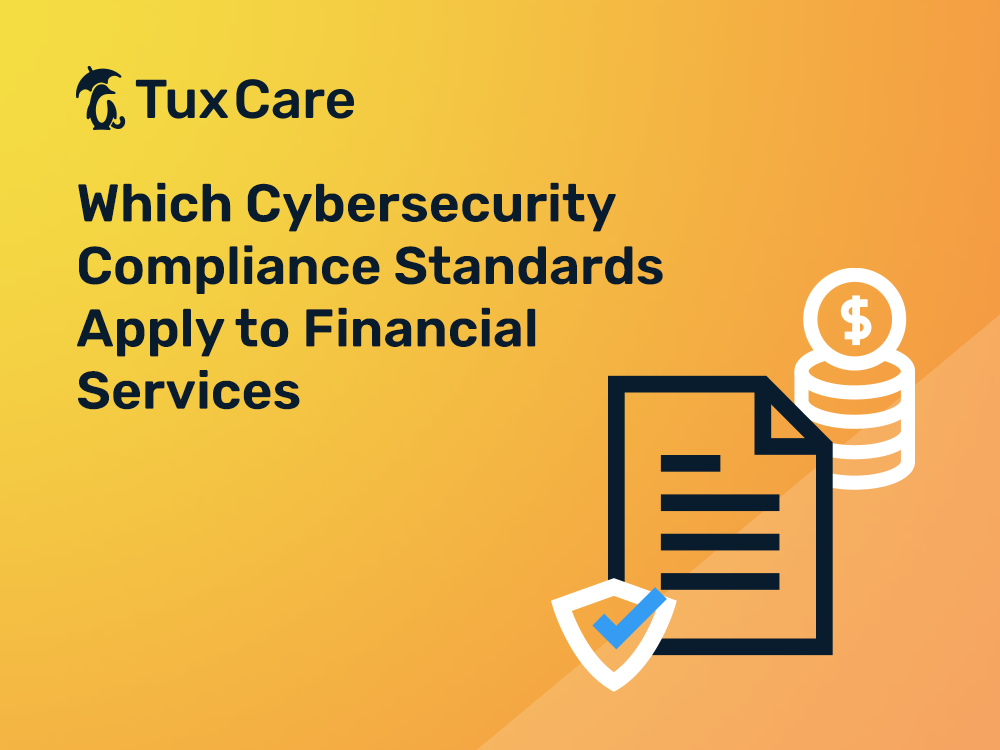Which Cybersecurity Compliance Standards Apply to Financial Services Organizations?
Regulations and standards guide companies toward a consistent cybersecurity response. Even if it sets just a minimal baseline, rulebooks still serve as an improvement on what could sometimes be a very limited cybersecurity defense effort.
Financial services organizations are some of the most highly regulated organizations in the world, so it’s no surprise that there are several cybersecurity compliance standards that are specific to these types of companies. While not providing an exhaustive list, in this article we’ll look at some of these regulations and outline why patching, and specifically live patching, is at the core of compliance.
Compliance Regulations Specific to Financial Services
Financial service providers, such as commercial banks, credit unions, insurance companies, investment banks, fintech companies, neobanks, and brokerage firms are governed by specific regulations that take into account the unique needs of financial services customers.
The following financial services standards cover topics around cybersecurity and have broad implications for financial services firms who face fines – or worse – if they are found non-compliant:
- Gramm-Leach-Bliley Act (GLBA): A federal law that requires that financial institutions protect the security and confidentiality of customer information. This includes sending an annual privacy notice to customers and giving customers the opportunity to opt out of information sharing with third parties.
- Payment Card Industry Data Security Standards (PCI DSS): The other prominent rulebook for financial services, PCI DSS, applies to any organization that accepts, processes, stores, or transmits payment card information. It establishes a set of security controls and best practices to help safeguard cardholder data.
- The New York State Department of Financial Services (NYDFS) Cybersecurity Regulation: Though it is a NY state law, it applies to any company licensed or operating in the State of New York, which broadens its reach. NYDFS requires banks and insurance companies to establish a cybersecurity program that includes specific information security requirements.
Depending on the services an organization offers, how it accepts payments for those services, and the jurisdiction in which an organization participates, it may be just one of the above compliance regimes that apply – or indeed all three.
Tools And Guidelines to Consider
Tools and guidelines also serve a useful purpose, even if keeping to the advice is not mandatory. The Federal Financial Institutions Examination Council (FFIEC) offers a cybersecurity assessment tool that is used by financial institutions to evaluate their cybersecurity risk and to identify gaps in security controls.
Likewise, the Financial Industry Regulatory Authority (FINRA) provides guidelines to help financial services firms protect their networks and customer data from cyber threats.
Even though it’s not aimed specifically at financial services organizations, the NIST’s Cybersecurity Framework is nonetheless another valuable framework that serves as a common language that broadly addresses cybersecurity risks. NIST is commonly adopted by financial services companies in the US.
In finance, companies also often get themselves a SOC 2 report, which is generated via an auditing process that examines the controls at service organizations, including those that deliver financial services, and covers security, availability, processing integrity, confidentiality, and the privacy of all of these systems.
Patching Is at The Core of Compliance
Whether it’s a security mandate or a guideline, it comes down to the same thing – keeping your systems safe from external threats. Patching is one of the most obvious things to do to achieve that safety. Patch a known vulnerability and threat actors can no longer exploit that vulnerability.
Patching also allows for fewer opportunities to exploit the lower the risk of attack success, particularly given the automated and speculative nature of so many of the attacks we see today. For that reason, many cybersecurity standards – including PCI DSS – refer explicitly to patching.
Patching is unfortunately also one of the toughest things to get right consistently because patching is time consuming and disruptive. The net result is that the intent to patch consistently may be there, but that the reality may amount to something else – unless live patching is deployed.
Live Patch to Support Your Compliance Efforts
TuxCare’s live patching solution changes the vulnerability game completely. Because it is automated, it means that sysadmins no longer need to invest huge amounts of time to manually apply critical security patches.
And, because TuxCare’s live patching solution applies security updates without the need to restart – and disrupt – systems, it also means that patching occurs seamlessly and consistently because there’s never any downtime to try to negotiate.
Live patching from TuxCare simply makes it much easier for financial services organizations to stay compliant with mandatory requirements, and to keep within good practice frameworks. You can read more about how live patching works here and view our solutions page here.



 Documentation
Documentation Login
Login



